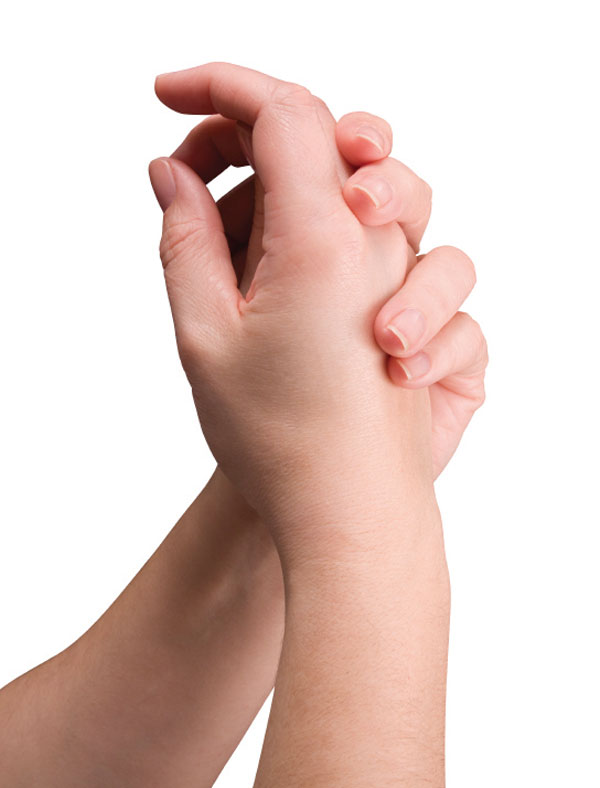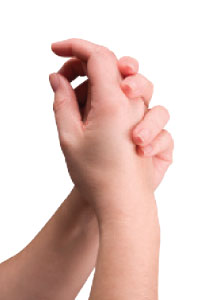 I hear the same story over and over again in my clinic. A distraught patient comes in for an evaluation and feels there is nothing that can ease their pain because they have been diagnosed with knee osteoarthritis. One in three people have osteoarthritis of the knee, yet only one in eight have symptoms or pain.1 If knee osteoarthritis is so correlated with pain, why is there a disconnect between the number of people who have arthritis, and those who are in pain?
I hear the same story over and over again in my clinic. A distraught patient comes in for an evaluation and feels there is nothing that can ease their pain because they have been diagnosed with knee osteoarthritis. One in three people have osteoarthritis of the knee, yet only one in eight have symptoms or pain.1 If knee osteoarthritis is so correlated with pain, why is there a disconnect between the number of people who have arthritis, and those who are in pain?
Let’s consider what knee osteoarthritis is, evidence-based methods of easing symptoms, and ways to improve quality of life for those that have knee pain associated with arthritis.
Osteoarthritis (OA) is defined as the progressive deterioration of articular cartilage1, or abnormalities that lead to the destruction of a joint. Of the weight bearing joints, the knee is the most common to develop OA.2 Some noted risk factors for knee OA are obesity3, lack of quadriceps strength, and decreased proprioception.2 Although many knee OA cases are best treated with surgeries, including total knee replacements, not everyone is headed down that road.
In many cases, those who are dealing with pain in the knees related to knee OA are not destined to live with it. Recent studies have shown that reducing a person’s weight to a healthy level can diminish the chances of developing pain associated with knee OA by 25 %.3 As mentioned earlier, quadriceps strength and proprioception can also affect knee OA. The quadricepses are the large muscles that run along the front of the thigh to stabilize the knee. As we perform activities, we require an internal force that matches the external force that is being applied to the knee with movement. Strengthening the quadriceps muscles absorbs some of the load and provides the knee with that stability.2 Proprioception is the awareness of where the joint is in space. It plays a role in providing the aforementioned stability by coordinating the contraction of muscles and the order in which they interact with the knee. Evidence shows that improving quadriceps strength and proprioception can reduce the pain associated knee OA even if there is no change in the presence of OA on an X-ray.2
You can improve quadriceps strength and proprioception with tailored exercises. Physical therapists are movement experts who can assess and treat the biomechanics that may lead to altered forces on the knees.
Not all people who are dealing with the pain and limitations of knee OA are going to benefit from losing weight, improving quadriceps strength, and proprioception. However, a recent study in the New England Medical Journal showed that many people will indeed benefit from improving these areas.4 So if the dreaded knee OA is inhibiting your life, consider consulting with a physical therapist.
Vincent Kambe is a Doctor of Physical Therapy and Certified Orthopedic Specialist. He is the clinic director for Avid Physical Therapy – Indio and can be reached at (760) 347.6195. vince@avidphysicaltherapy.com
References: 1) Conservative Management of Symptomatic Knee-Osteoarthritis: A Flawed Strategy? Crawford, D., Miller, L., Block, J. Orthop Rev (Pavia). Feb. 22, 2013; 5(1): e; 2) The Effect of Quadricepss Strength and Proprioception on Risk for Knee Osteoarthritis. Segal, N., Glass, N., Felson, D., et al. Med Sci Sports Exerc. Nov 2010; 42(11): 2081–2088.; 3) Increaseing Prevalence of Knee Pain and Symptomatic Knee Osteoarthritis. Nguyen, U., Zhang, Y., Zhu, Y., et al. Ann Intern Med. Dec 6, 2001: 155 (11): 725-732.; 4) Surgery versus Physical Therapy for a Meniscal Tear and Osteoarthritis. Katz, J., Brophy, R., Chaisson, C., et al. N Engl J Med. May 2, 2013; 368(18): 1675-1684.










































Comments (0)